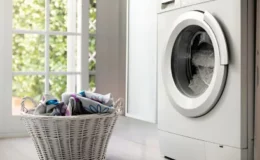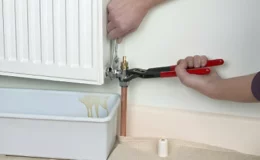🕑 5 minutes read

A spotlessly clean and fully functional shower adds to an invigorating and refreshing bathing experience. However, it takes more than just a bit of elbow grease to keep your bathroom looking squeaky clean.
The bathroom may look spotless, but one thing that can impair the appearance is the condition of the sealant around the shower tray or bath. Over time, sealant will deteriorate, allowing water to penetrate beneath cracked and split silicone as well as encouraging mould growth. That's why proper silicone maintenance and inspection are essential to prevent these issues from spoiling the appearance of your bathroom.
In this blog post, we'll discuss shower resealing, specifically focusing on identifying the signs that indicate it's time to take action.
Inspection: Any signs of cracking, peeling, or mould growth suggests the affected silicone must be removed and replaced. If you have recognised the signs but have not responded, the chances are that water has already seeped behind the shower tray and bath and has already started deteriorating the structure beneath. Therefore, swift action is essential to prevent further damage to those areas not visible to the naked eye!
A visual inspection can quickly pinpoint any damaged sections of silicone; Sometimes, however, you will need to apply a spray test. Simply spray water onto the sealant and observe its behaviour. If it runs down without any penetration, the seal is intact. However, if the silicone absorbs the water through hairline cracks, it's an obvious sign that the seal is ineffective and should be removed. The area must then be meticulously cleaned and dried before the new silicone is applied. The longer you leave any obvious signs of water leakage/damage, the more costly the repair can be.
The bathroom may look spotless, but one thing that can impair the appearance is the condition of the sealant around the shower tray or bath. Over time, sealant will deteriorate, allowing water to penetrate beneath cracked and split silicone as well as encouraging mould growth. That's why proper silicone maintenance and inspection are essential to prevent these issues from spoiling the appearance of your bathroom.
In this blog post, we'll discuss shower resealing, specifically focusing on identifying the signs that indicate it's time to take action.
The Importance of Shower Resealing
Before embarking on resealing your bath & shower, let's emphasise the significance of maintaining a properly sealed shower/bath. A watertight seal is essential to prevent water from penetrating gaps and causing damage to walls, floors, ceilings below and adjacent areas. Well-maintained silicone seals ensure an environment free of mould, mildew, and other fungal growth.Inspection: Any signs of cracking, peeling, or mould growth suggests the affected silicone must be removed and replaced. If you have recognised the signs but have not responded, the chances are that water has already seeped behind the shower tray and bath and has already started deteriorating the structure beneath. Therefore, swift action is essential to prevent further damage to those areas not visible to the naked eye!
Signs That a Shower/Bath Needs Resealing
Visual InspectionA visual inspection can quickly pinpoint any damaged sections of silicone; Sometimes, however, you will need to apply a spray test. Simply spray water onto the sealant and observe its behaviour. If it runs down without any penetration, the seal is intact. However, if the silicone absorbs the water through hairline cracks, it's an obvious sign that the seal is ineffective and should be removed. The area must then be meticulously cleaned and dried before the new silicone is applied. The longer you leave any obvious signs of water leakage/damage, the more costly the repair can be.

Mould & Mildew Growth
In bathrooms, mould and mildew growth can run riot due to the damp and humid conditions. If there are obvious signs of black spots and a musty odour, it needs prompt attention to prevent the fungi from spreading and posing health risks.
In bathrooms, mould and mildew growth can run riot due to the damp and humid conditions. If there are obvious signs of black spots and a musty odour, it needs prompt attention to prevent the fungi from spreading and posing health risks.
Applying a new sealant can eliminate the excess moisture that provides a breeding ground for mould and mildew.
Bathrooms can be a breeding ground for mould and mildew growth due to the humid and damp atmosphere. It is crucial to take prompt action if there are visible signs of black spots and a musty odour to prevent the fungi from spreading and posing health risks. Removing the old sealant and applying a new one can eliminate the excess moisture that often acts as a breeding ground for mould and mildew. To get the best results, use a sealant gun and try to apply the sealant correctly. Once done, ensure the bathroom is aired out to facilitate quick drying, which helps to keep mould and mildew at bay. Caring for mould and mildew problems is crucial for maintaining a clean and healthy bathroom environment.
Bathrooms can be a breeding ground for mould and mildew growth due to the humid and damp atmosphere. It is crucial to take prompt action if there are visible signs of black spots and a musty odour to prevent the fungi from spreading and posing health risks. Removing the old sealant and applying a new one can eliminate the excess moisture that often acts as a breeding ground for mould and mildew. To get the best results, use a sealant gun and try to apply the sealant correctly. Once done, ensure the bathroom is aired out to facilitate quick drying, which helps to keep mould and mildew at bay. Caring for mould and mildew problems is crucial for maintaining a clean and healthy bathroom environment.

Difficulty In Cleaning
Maintaining a spotless shower is crucial for personal hygiene. As time goes by, the shower's daily wear and tear causes the sealant to weaken and becomes more challenging to clean. To make sure that your shower stays as hygienic as possible, it's necessary to
Maintaining a spotless shower is crucial for personal hygiene. As time goes by, the shower's daily wear and tear causes the sealant to weaken and becomes more challenging to clean. To make sure that your shower stays as hygienic as possible, it's necessary to
do a deep clean every couple of weeks. Be sure to include all areas, especially the silicone, which is often overlooked. It's important to use an anti-fungal product when cleaning the shower interior and silicone altogether. This way, we can ensure that the silicone remains in excellent condition and prevents mould and mildew growth. While it may take some time, utilising essential items such as an anti-fungal product, tray, and silicone gun will greatly simplify and expedite the cleaning process.
Don't let an old and dirty shower put your health at risk. Get rid of any grime, soap scum, or residues effectively and completely with the right tools and a little effort.
Since It was Last Resealed
Ensuring that the sealant in your home or workplace is up to date is crucial to avoid any potential water damage. As sealants typically have a 3-5 years lifespan, it's important to note when it was last resealed and assess whether it's time for a new application. Factors such as frequency of use, cleaning methods, and water quality can all impact the lifespan of your sealant.
To apply a new sealant, make sure the area is dry and free of any old residue. Using a sealant gun, apply the sealant evenly along the area and remove any excess with a tray or scraper. By properly resealing your space, you can avoid any unwanted leaks and potential water damage.

At serviceteam Ltd. London, our plumbing team specialise in resolving all bathroom-related issues. If the silicone needs replacing, or there's a need for regrouting or even a completely new shower or bathroom installation, our team is well-equipped to assist you.
Our team is readily available to assist you in identifying the optimal solution that perfectly aligns with your requirements. So, if you're tired of dealing with a leaking shower, contact us now.
Trust serviceteam Ltd. to return your bathroom to its optimal working condition and keep water damage at bay.
Don't let an old and dirty shower put your health at risk. Get rid of any grime, soap scum, or residues effectively and completely with the right tools and a little effort.
Since It was Last Resealed
Ensuring that the sealant in your home or workplace is up to date is crucial to avoid any potential water damage. As sealants typically have a 3-5 years lifespan, it's important to note when it was last resealed and assess whether it's time for a new application. Factors such as frequency of use, cleaning methods, and water quality can all impact the lifespan of your sealant.
To apply a new sealant, make sure the area is dry and free of any old residue. Using a sealant gun, apply the sealant evenly along the area and remove any excess with a tray or scraper. By properly resealing your space, you can avoid any unwanted leaks and potential water damage.
Tools Needed For Resealing
Silicone sealant remover tool
Utility knife
Methylated spirit (or similar) to remove silicone residues
A reputable silicon sealant
Silicone gun
A range of silicone smoothing tools (Fugi kit)
By paying attention to the above facts, you can proactively determine when to reseal your shower/bath before other problems ariseNeed A Professional Shower Resealing Service?

At serviceteam Ltd. London, our plumbing team specialise in resolving all bathroom-related issues. If the silicone needs replacing, or there's a need for regrouting or even a completely new shower or bathroom installation, our team is well-equipped to assist you.
Our team is readily available to assist you in identifying the optimal solution that perfectly aligns with your requirements. So, if you're tired of dealing with a leaking shower, contact us now.
Trust serviceteam Ltd. to return your bathroom to its optimal working condition and keep water damage at bay.






